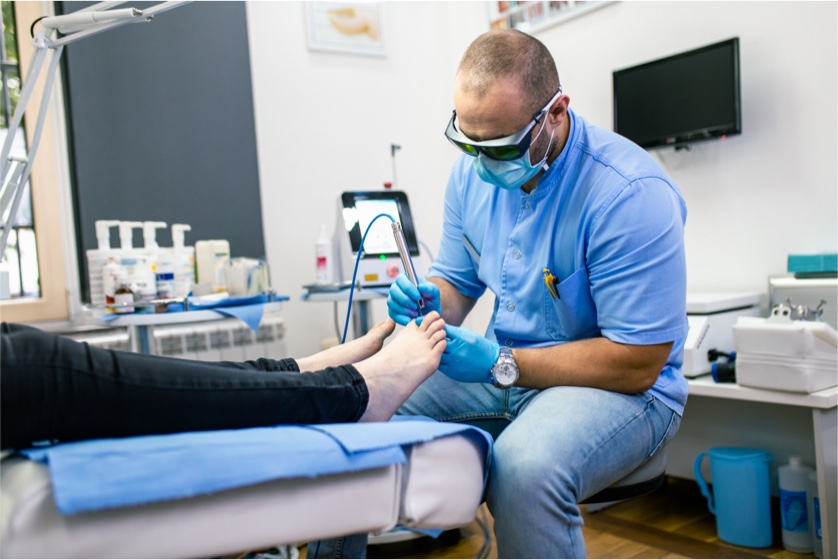Toenail fungus is a common concern affecting millions worldwide. While it may seem like a minor inconvenience, the reality is that it can lead to significant discomfort and complications if left untreated. In this article, I will share effective strategies to help you keep your nails fungus-free, especially if you frequent public places like gyms, pools, or locker rooms. By incorporating these tips into your daily routine, you can significantly reduce the risk of toenail fungus and improve your overall foot health.
Understanding Toenail Fungus
Toenail fungus, or onychomycosis, is a fungal infection that can affect one or multiple toenails, leading to discoloration, thickening, and even separation from the nail bed. The condition is caused primarily by dermatophytes, fungi that thrive in warm, moist environments.
Symptoms to watch for include:
- Discoloration: Nails may appear white, yellow, or brown.
- Thickened Nails: The affected nails may become unusually thick.
- Brittle or Crumbling Nails: Infected nails can break or crumble easily.
- Separation: In severe cases, the nail may separate from the nail bed.
Prevention is important, as untreated toenail fungus can lead to complications such as pain, secondary infections, or even permanent nail damage. By understanding how toenail fungus develops and implementing effective prevention strategies, you can safeguard your nails from infection.
Toenail Fungus Prevention Tips
- Maintain Overall Foot Hygiene: Good hygiene is the first line of defense against toenail fungus. Wash your feet daily with soap and water, ensuring you clean between the toes. After washing, dry your feet thoroughly, as moisture is a breeding ground for fungi.
- Regular Trimming and Cleaning of Nails: Keep your toenails trimmed and filed to prevent them from snagging and to reduce the risk of injury. This not only helps in maintaining nail health but also makes it easier to spot any signs of infection early on.
- Keep Feet Dry and Clean: Moisture is a significant factor in fungal growth. After showering or swimming, dry your feet completely, especially between the toes. Consider using foot powder to absorb excess moisture, especially if you have sweaty feet.
Proper Footwear Choices
- Choose Breathable Shoes: Opt for shoes made from breathable materials like leather or canvas. These materials allow air circulation, which helps keep your feet dry and reduces the likelihood of fungal infections.
- Importance of Moisture-Wicking Socks: Wearing moisture-wicking socks can help keep your feet dry throughout the day. Look for socks made from synthetic materials designed to wick sweat away from the skin, rather than cotton, which retains moisture.
- Recommendations for Materials: Avoid synthetic shoes that trap moisture. Instead, choose footwear that allows for ventilation. If you’re prone to fungal infections, consider using antifungal insoles for additional protection.
Avoiding High-Risk Areas
Certain environments are notorious for promoting fungal growth. Gyms, pools, and locker rooms can harbor fungi, making it essential to take precautions.
- Identify High-Risk Areas: Be aware of areas where fungi thrive, such as communal showers, public pools, and gym locker rooms. These environments are often warm and humid, perfect for fungal growth.
- Tips for Staying Safe: Always wear flip-flops or water shoes in communal showers and pool areas. Avoid walking barefoot in these places, as direct contact with the floor can expose your feet to harmful fungi.
Regular Nail Care Routine
Establishing a consistent nail care routine is crucial for maintaining healthy nails and preventing infections.
- Suggested Practices for Healthy Nails: Regularly inspect your nails for any changes in color, thickness, or texture. If you notice anything unusual, consult a podiatrist promptly.
- Use of Antifungal Products: Consider applying antifungal liquids, powders or sprays to your feet and shoes, especially if you are prone to infections. These products can provide an extra layer of protection by keeping your feet dry and inhibiting fungal growth.
- Importance of Professional Nail Care: Regular visits to a podiatrist or nail care professional can help identify potential issues before they become serious. If you observe signs of infection or have a history of fungal issues, seeking professional help is essential.
Conclusion
Protecting your nails from fungal infections is crucial for maintaining overall foot health. By adopting the prevention strategies discussed above—such as maintaining proper foot hygiene, choosing breathable footwear, avoiding high-risk areas, and establishing a regular nail care routine—you can significantly reduce your risk of developing toenail fungus. Remember, proactive health management is key to long-term nail health. For additional support, consider using products like ProClearz Fungal Shield which contains 1% Tolnaftate, clinically proven to cure fungal infections and prevent fungal infections from recurring, and BRITE NOW which helps improve the appearance of nails damaged by fungus by reducing discoloration, restoring brightness, and renewing the surface.
Consult a podiatrist If you have further concerns about nail health or suspect you may have a fungal infection. Your feet deserve the best care, and prevention is always more manageable than treatment.
References
- American Academy of Dermatology. (2021). Nail Fungus. [https://www.aad.org/public/diseases/contagious-skin-diseases/nail-fungus]
- Mayo Clinic. (2022). Nail Fungus: Symptoms and Causes. [https://www.mayoclinic.org/diseases-conditions/nail-fungus/symptoms-causes ]
- National Institutes of Health. (2020). Onychomycosis. [https://pmc.ncbi.nlm.nih.gov/articles/PMC7509699/]
- Centers for Disease Control and Prevention. (2019). Fungal Infections. [ https://www.cdc.gov/fungal/index.html ]
